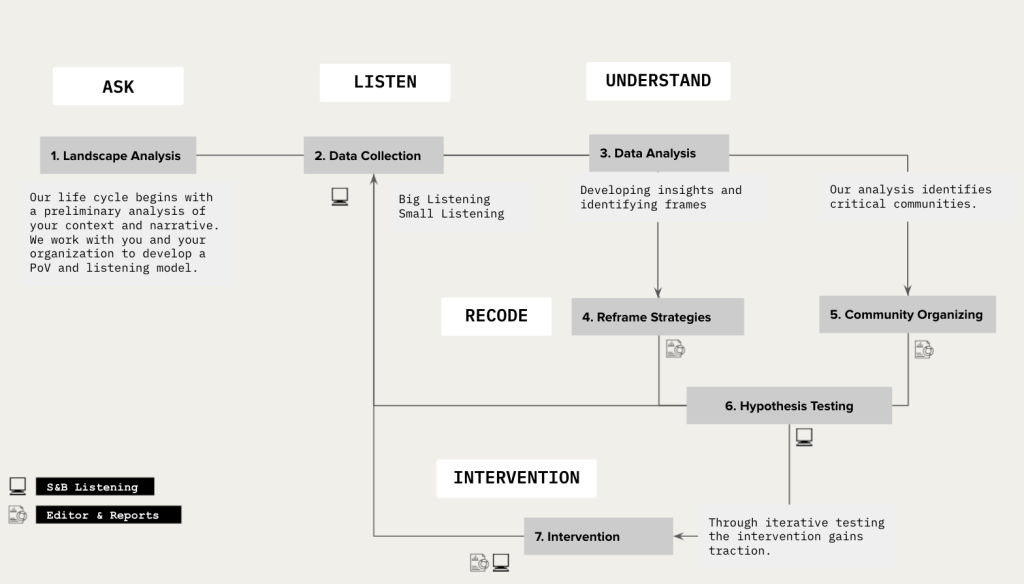The Culture Hack Method
The Culture Hack method a five phase approach to narrative change and is depicted in the diagram below. Through this method we define an inquiry, collect and analyze data, reframe the emerging narratives and then craft a cultural intervention.
Ask
Listen
Understand
Recode
Intervene

Ask
This is the first step to inquire about the context and goals of the narrative intervention we are engaging in. This is an opportunity to bring together the stakeholders to develop a ‘point of view statement’. This sets the foundation; the goal and intention of the narrative intervention and informs and contextualizes the data collection and analysis stages of the methodology.
Listen
To effectively intervene in the narrative, we must first understand the landscape. We do not aim to develop a model that asserts it already knows what needs to be done, one that still employs old logics of centralized ‘command and control’. Rather we begin by listening into where the new moments of change are occurring and what they are revealing to us. We utilize the process of Big and Small Listening to collect our data. The Big Listening reveals the overarching patterns in the narratives whereas the Small Listening allows us to identify texture and nuance in the narratives.
Understand
At this step, we are analyzing the data that we have collected using the Attention, Power and Network analyses that are developed specifically for narrative change work. These analyses allow us to uncover frequency, strength and proliferation of specific narratives including which communities are most active and who are the most influential voices. Linguistic analysis is also implemented at this stage to understand the deeper logics that are embedded within the narratives. The output of this stage are insights that support in creating the reframe strategies.
Recode
Here we undergo a process where we change the current narrative frames around a particular topic to activate new logics, new ideas, truths and beliefs. In this way we can generate new intentions and everyday actions that eventually lead to different material & visible expressions of the narrative: new speeches, new texts, new images, new sounds, etc.
Intervene
The Intervene step interprets the messages that we’ve recoded – our intended counter-narratives – to language and imagery that resonate with our intended audiences, and then disseminates them in spaces our mapping analysis has identified as crossroads for the narratives. The intervention phase is informed by the strategy and can take many forms from a grassroots movement to a media-led campaign. Examples of interventions are 1) Cura Da Terra, an indigenous women led project that aims to co-create narratives of responsibility, reciprocity, and regeneration in times of system collapse. 2) Yo prefiero El Lago, an intervention to stop the build of an airport that would benefit the few and destroy a lake and community in Mexico.